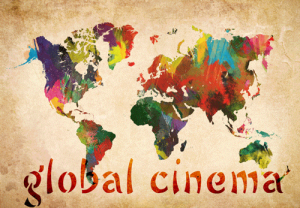Global Crisis = Global News
When it affects a global audience, it is necessary to faciliotate an international spread of information dissemination. it is also important to ensure that certain cultures are not left behind based on contraflows laggin or the view points held on Ethonocentrism. It is trhough global crisis that factos such as clashing civilisations should be cast aside as the topic or issue at hand conflicts a party much larger.
In this topic, ‘voice for the voiceless’ becomes apparent, as, as much as many parties would like to see equality in perspectives give, the fact of the matter is that often news channels only provide a spotlight on the ‘welites’ of society consditioning.
There is also the issue of false baslance whereby a topic is opened for disccion with unequal balance or perspective allowed where it is not required or needed.
In particular the issue of Global warming and the controversy that surrounds the tiopic. There is a swarm
How the topic of global warming and climate change is experienced internationally is a highly mediated topic, with vast differences on public opinion, speculation and presentation of information. This then leads to the question, for these vast differences to occur, is there the arrival of false balance and if so how can this be rectified? In terms of voice for the voiceless – in terms of westernised communities harbouring stronger and wider news capacity, there is a certainty that people groups will go un-heard and swept aside
 The way in which a topic is discussed and presented to the public will influence two factors: The first, how it is interpreted an identity is facilitated as well as changing the education and therefore understanding of the wider public. Therefore understanding and social acceptance of a topic will be greatly swayed and misinformed.
The way in which a topic is discussed and presented to the public will influence two factors: The first, how it is interpreted an identity is facilitated as well as changing the education and therefore understanding of the wider public. Therefore understanding and social acceptance of a topic will be greatly swayed and misinformed.
Who has a say in this public debate and what kind of weighting their position is given should, in terms of social factors and influence levels, be determined based on education, qualifications and abilities to discuss in an open format. Instead, in this ‘debate’ for climate change, ideologies that are presented are based off opinion and speculation with unequal weighting of importance being granted, lowering the believability of the specialists information.
However, in this scape, where so many societies and social groups have already accepted that climate change is a fact and therefore action needs to be take, should the “debate” of such a topic still be in the air? Espcially when this kind of reporting and dissemination of information only leads to further confusion in the public domain.
I propose that the need or space for debate ends, and instead a conversation is facilitated by which education is provided.


![VoicelessSmRGB[1]](https://alyssunwin.files.wordpress.com/2014/10/voicelesssmrgb1.jpg?w=300&h=210)










